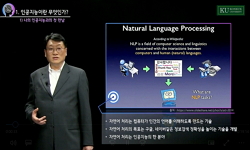This tutorial paper has been written for biologists, physicians or beginners in fuzzy sets theory and applications. This field is introduced in the framework of medical diagnosis problems. The paper describes and illustrates with practical examples, a...
http://chineseinput.net/에서 pinyin(병음)방식으로 중국어를 변환할 수 있습니다.
변환된 중국어를 복사하여 사용하시면 됩니다.
- 中文 을 입력하시려면 zhongwen을 입력하시고 space를누르시면됩니다.
- 北京 을 입력하시려면 beijing을 입력하시고 space를 누르시면 됩니다.
https://www.riss.kr/link?id=A106755798
- 저자
- 발행기관
- 학술지명
- 권호사항
-
발행연도
1991
-
작성언어
English
- 주제어
-
등재정보
KCI등재
-
자료형태
학술저널
- 발행기관 URL
-
수록면
9-25(17쪽)
- 제공처
-
0
상세조회 -
0
다운로드
부가정보
다국어 초록 (Multilingual Abstract)
This tutorial paper has been written for biologists, physicians or beginners in fuzzy sets theory and applications. This field is introduced in the framework of medical diagnosis problems. The paper describes and illustrates with practical examples, a general methodology of special interest in the processing of borderline cases, that allows a graded assignment of diagnoses to patients. A pattern of medical knowledge consists of a tableau with linguistic entries or of fuzzy propositions. Relationships between symptoms and diagnoses are interpreted as labels of fuzzy sets. It is shown how possibility measures (soft matching) can be used and combined to derive diagnoses after measurements on collected data. The concepts and methods are illustrated in a biomedical application on inflammatory protein variations. In the case of poor diagnostic classifications, it is introduced appropriate ponderations, acting on the characterizations of proteins, in order to decrease their relative influence. As a consequence, when pattern matching is achieved, the final ranking of inflammatory syndromes assigned to a given patient might change to better fit the actual classification. Defuzzification of results (i.e. diagnostic groups assigned to patients) is performed as a non fuzzy sets partition issued from a "separating power", and not as the center of gravity method commonly employed in fuzzy control. It is then introduced a model of fuzzy connectionist expert system, in which an artificial neural network is designed to build the knowledge base of an expert system, from training examples (this model can also be used for specifications of rules in fuzzy logic control). Two types of weights are associated with the connections: primary linguistic weights, interpreted as labels of fuzzy sets, and secondary numerical weights. Cell activation is computed through MIN-MAX fuzzy equations of the weights. Learning consists in finding the (numerical) weights and the network topology. This feed forward network is described and illustrated in the same biomedical domain as in the first part.
동일학술지(권/호) 다른 논문
-
- 한국지능시스템학회
- Zadeh
- 1991
- KCI등재
-
FUZZY LOGIC KNOWLEDGE SYSTEMS AND ARTIFICIAL NEURAL NETWORKS IN MEDICINE AND BIOLOGY
- 한국지능시스템학회
- Elie Sanchez
- 1991
- KCI등재





 ScienceON
ScienceON



